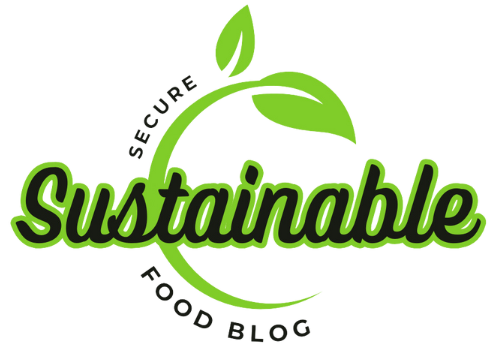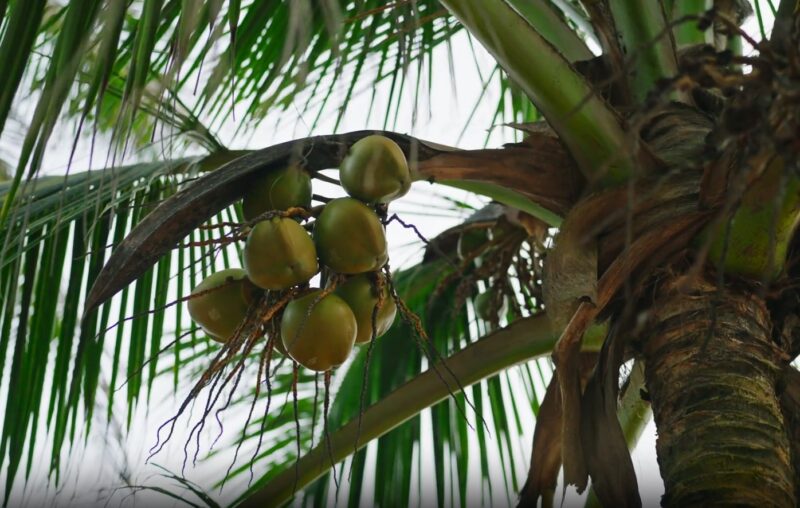Thinking about coconut, one image that comes to mind is lounging on a warm, sunny beach. Cool, sweet water from a freshly opened coconut, garnished with an orchid flower and a little paper umbrella is a beach tradition. And, this is a delightful thought about coconut, but this is a tree, and crop, that keeps on giving!
Coconut palms are mainly found growing along shorelines or in plantations in many tropical and warm subtropical regions. The tree is very resilient and can grow in a variety of soil conditions (including saline soil conditions as found near oceans). With many varieties present, they can be grouped into either tall or dwarf.
Coconuts grow on bunches high up in the trees. They are only one part of this tree that is useful.
Tall varieties, as their names suggest, can grow up to about 90 feet at full maturity. They are cross-pollinated and usually have diverse variations. Dwarf, on the other hand, are much shorter and reach heights close to about 40 feet. Dwarves have more specific growing conditions and can have a greater disease susceptibility.
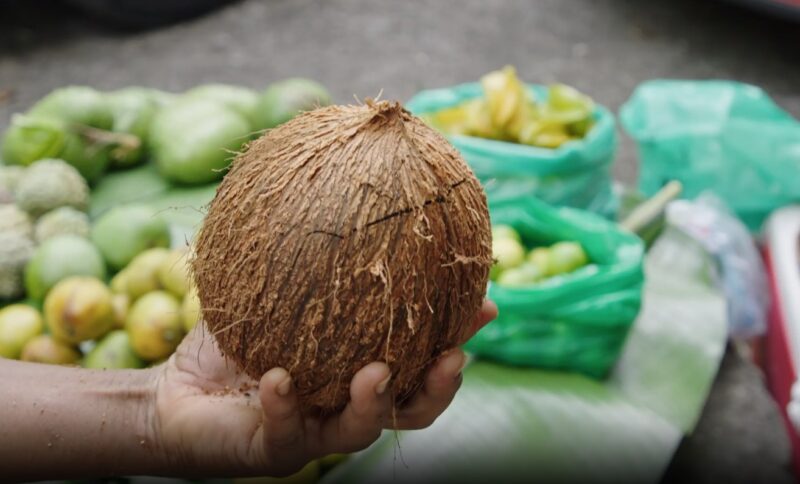
In terms of agronomic production, taller ones account for almost all coconuts grown – dwarf account for roughly 5 percent. Tall palms have a long life, usually producing fruit between 60-80 years, while dwarf species’ is 50-60 years.
This results in a higher planting density per area of land, and more per acre. Dwarfs start to produce fruit sooner as well. They can start producing fruit around 3 years after planting.
Globally, the market is estimated to be worth about $35.8 billion. In 2018, global production was around 67 million tons. Indonesia, the Philippines, and India lead global production and account for about most coconuts produced.
Kernel

The kernel is the meat of the coconut and is usually used as food. The kernel found within the inner shell can be eaten right away when fresh. Otherwise, it can be dried and grated. The kernel is rich in vitamins, minerals, and antioxidants. The kernel can be used to make milk (soak and squeeze the grated kernel in water). The milk is added to culinary dishes and haircare products. It is also dried and added to many dessert dishes, or even ground finely into flour.
Fruit production will experience challenges in the future such as global climate change. Sustaining fruit production will require advancements in the agronomy sector, especially in the tropics.
Water
Coconut water is found within the hard shell. This liquid has a sweet taste and can be consumed directly or added to other foods or drinks. It is naturally high in potassium – more than a banana!
Oil
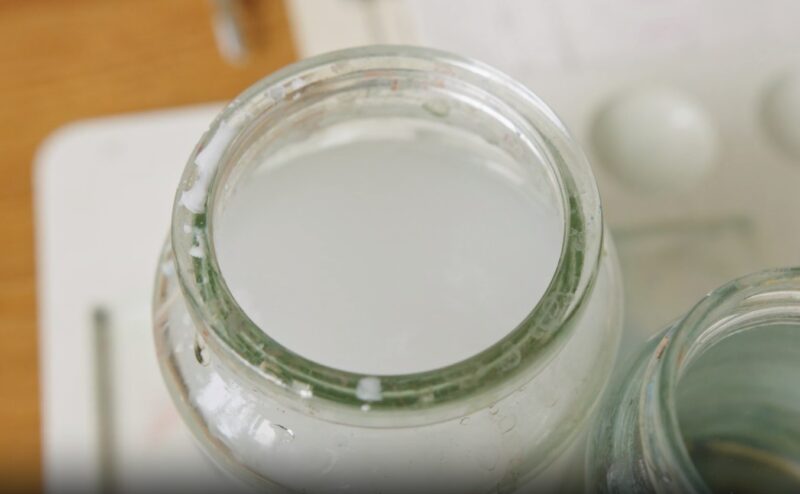
Coconut oil is extracted from dried kernels. This creates a substance called copra, from which the oil is extracted. Aside from being used in cooking, the oil can be found in many creams, skin moisturizers, and haircare products.
Shell
The hard shell of a mature coconut is used in many places across the world to make bowls. Additionally, the shell can be used to make different crafts and home decor ornaments. The shell can be used as a direct fuel source for outdoor cooking or can be converted to charcoal for multiple other purposes.
Husk

The husk is the portion of the fruit that surrounds the hard shell. When the husk is dried, it can be transformed into different natural products like ropes, brushes, rugs, carpets, and scrubbers.
Byproducts from husking include fiber and coir materials that can be used as an alternative potting medium within horticulture. The coir and fiber material can be mixed in with potting soil or used entirely as a soilless growing media. Coconut coir and fiber can be a great alternative to a peat-based growing substrate.
Leaves
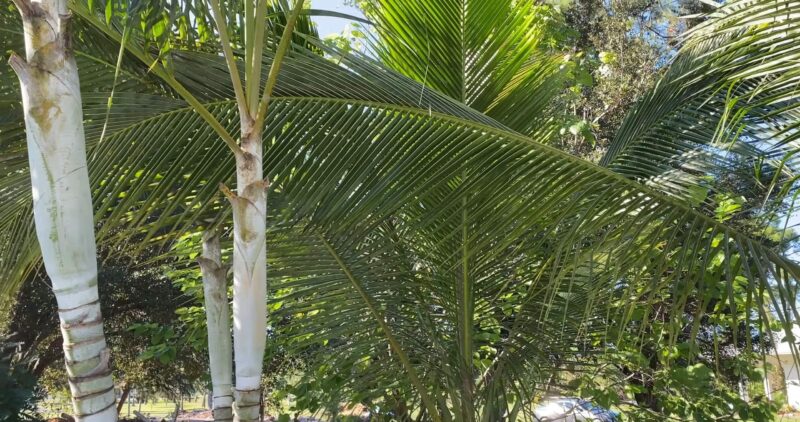
Palm fronds can be dried and used to create thatch roofing or fencing. The leaves of the frond can be used to make bowls, mats, and baskets or weaved together to created other pieces of artwork. The midrib of the leaf can be dried and tied together to make brooms. Fresh leaves can be used as filler material within floral and horticultural arrangements.
Many parts of the tree can be used to create useful products. The palm fronds are often used to make brooms.
Wood

The trunk of the tree can be used as an inexpensive wood for building materials and furniture. The wood from palms can be used as a source of fuel for outdoor cooking, as well.
Flowers and roots
The flowers produce a sap that can be used to make syrup. If the syrup is fermented long enough, it creates alcohol or vinegar. The roots are used to make dye and are highly valued for their medicinal use within indigenous cultures.
With the many products resulting from some parts of the palm, it is no wonder this crop is of great global importance. With greater demands for coconuts projected in the near future, more countries will increase the scale of production in this decade. New cultivars, better management practices, and more research will help make this necessary production increase a reality.
Final Words
The coconut palm is not just a symbol of tropical paradise but a versatile and sustainable crop that plays a vital role in the global economy and ecology. Its myriad uses, from food to construction, make it an indispensable resource.
